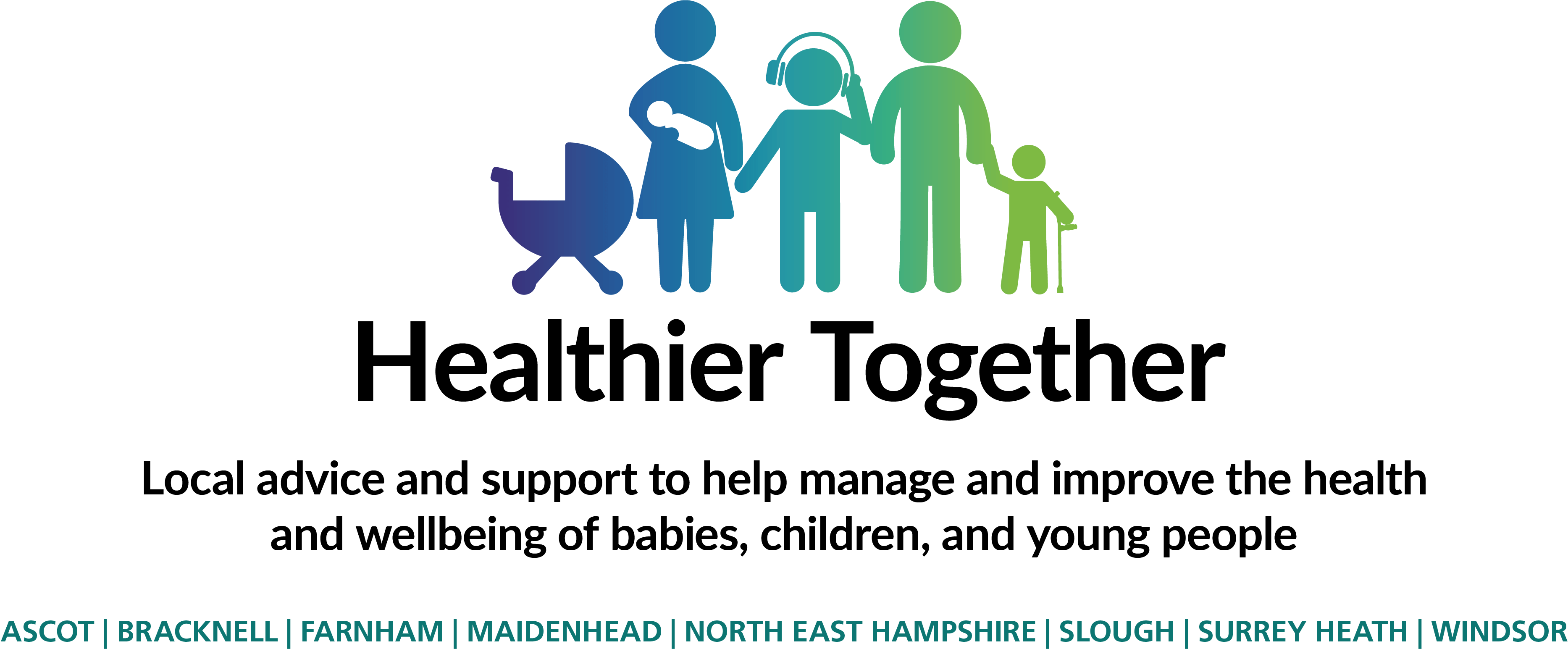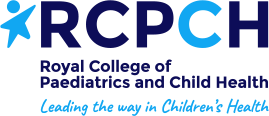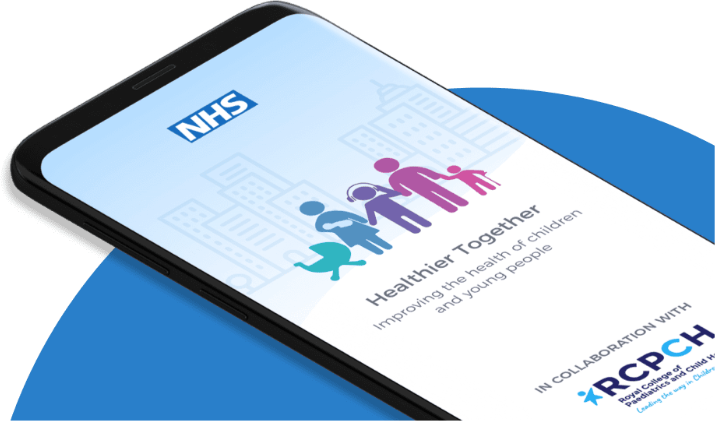Scarlet Fever and Group A Strep
Scarlet fever is an illness caused by a bug called Group A Streptococcus, which is found on the skin and in the throat. Scarlet fever mostly affects children and can easily spread to other people.
Generally, scarlet fever is much less common than it used to be but in the last few years there have been a number of outbreaks. It is important that children with scarlet fever are assessed by a healthcare professional so that they can be started on antibiotics. This is not only to reduce the chance of their infection becoming more severe but also to stop them spreading the infection to others, especially people at higher risk of severe infections such as the elderly and those with weakened immune systems.
It is important to note that if your child only has a runny nose, cough or diarrhoea, they are less likely to have scarlet fever. The majority of these illnesses and sore throats will still be caused by viruses.
The scarlet fever rash often begins with small spots on the body that then spread to the neck, arms and legs over the next 1 to 2 days. The rash may be harder to see on darker skin tones. It often feels like 'sandpaper' but is not itchy.
The rash does not appear on the face, but the cheeks can look red. The redness may be harder to see on brown and black skin.

Your child may also have a:
- Sore throat/tonsillitis
- Fever (temperature of 38°C (100.4°F) or above)
- Painful, swollen glands in the neck
- A red tongue: A white coating appears often at the back and along the centre. This peels, leaving the tongue red/reddish-orange, swollen and covered in little bumps (called "strawberry tongue").
If your child also has a runny nose with their sore throat, it makes a diagnosis of scarlet fever and Group A strep less likely.
For further information please click on- Scarlet fever - NHS (www.nhs.uk)


When should you worry?
If your child has any of the following:
- Breathing very fast, too breathless to talk, eat or drink
- Working hard to breathe, drawing in of the muscles below the ribs (recession), or noisy breathing (grunting)
- Breathing that stops or pauses
- Is pale, blue, mottled or feels unusually cold to touch
- Difficult to wake up, very sleepy or confused
- Weak, high-pitched cry or can’t be settled
- Has a fit (seizure)
- Develops a rash that does not disappear with pressure (the 'Glass Test')
- Is under 3 months old with temperature more than 38°C or under 36°C (unless fever in the 48 hours following vaccinations and no other red features)
You need urgent help.
Go to the nearest Hospital Emergency (A&E) Department or phone 999
If your child has any of the following:
- Unable to swallow saliva
- Painful, red swollen neck glands
- Painful, swollen joints
- Puffy face or eyelids
- Dark coca-cola coloured wee (urine)
- Develops red lips or a red tongue
- Develops a lot of skin peeling
- Breathing a bit faster than normal or working a bit harder to breathe
- Dry skin, lips or tongue
- Not had a wee or wet nappy in last 8 hours
- Poor feeding in babies (less than half of their usual amount)
- Irritable (Unable to settle them with toys, TV, food or hugs even after their fever has come down)
- Not using or putting weight on an arm, leg, hand or foot.
- Complaining of severe pain that is not improving with painkillers
- Is 3-6 months old with temperature 39°C or above (unless fever in the 48 hours following vaccinations and no other red or amber features)
- Temperature of 38°C or above for more than 5 days or shivering with fever (rigors)
- Temperature less than 36°C in those over 3 months
- Getting worse and I am still worried
You need to contact a doctor or nurse today.
Please ring your GP surgery or call NHS 111 for advice – dial 111
If symptoms persist for 4 hours or more and you have not been able to speak to
either a member of staff from your GP practice or to NHS 111 staff, recheck that your child has not developed any red features
If none of the above features are present
- Watch them closely for any change and look out for any red or amber symptoms
- If your child has other symptoms associated with their fever, you might want to look at our information on sore throat, cough, earache, diarrhoea and vomiting or tummy ache or our other pathways.
- If your child has a long term condition or disability and you are worried please contact your regular team or follow any plans that they have given you.
Self care
Continue providing your child’s care at home. If you are still concerned about your child, please ring your GP surgery or out of hours contact NHS 111 for advice – dial 111 or for children aged 5 years and above visit 111.nhs.uk
What should you do?
- If you think your child has scarlet fever, they should be seen by their GP. They may need treatment with antibiotics.
- Important: Keep your child away from nursery or school for at least 24 hours after starting antibiotic treatment. Adults with scarlet fever should also stay off work for at least 24 hours after starting treatment.
Self Care.
- To make your child more comfortable, you may want to lower their temperature using paracetamol (calpol) and/or ibuprofen. Use one and if your child has not improved 2/3 hours later you may want to try giving the other medicine. However, remember that fever is a normal response that may help the body to fight infection and paracetamol/ibuprofen will not get rid of it entirely.
- Avoid tepid sponging your child - it doesn't actually reduce your child's temperature and may cause your child to shiver.
- Many of the symptoms of scarlet fever can be relieved using some simple self-care measures, such as:
● drinking plenty of cool fluids
● eating soft foods (if your throat is painful)
● taking paracetamol to bring down a high temperature/distress
● using calamine lotion or antihistamine tablets to relieve itching
- It also may be helpful to see our advice on fever.
How long will your child's symptoms last?
- The sore throat and fever often last for about 3-6 days and the rash usually improves within a week. Antibiotics reduce the length of fever/sore throat by about 1 day.
- Children commonly experience peeling of their fingers and toes after scarlet fever.
- Your child is no longer infectious to others (contagious) after 24 hours of starting antibiotics and can go back to school/nursery if they feel well enough.
How to avoid spreading Scarlet fever?
Scarlet fever is very contagious and can easily spread to other people. To reduce the chance of spreading Scarlet fever:
Do:
● wash your hands often with soap and water
● use tissues to trap germs from coughs or sneezes
● bin used tissues as quickly as possible
Don’t:
● do not share cutlery, cups, towels, clothes, bedding or baths with anyone who
has symptoms of scarlet fever
Is Scarlet Fever dangerous?
Most cases of scarlet fever don't cause problems, particularly if the condition is properly treated. Occasionally, Group A streptococcus can spread to other areas of the body, causing infections in the neck (tonsillar abscesses or lymph node abscesses), chest infections (pneumonia), bone and joint infections (spetic arthritis) or sepsis. This is called invasive Group A Streptococcal disease (iGAS).
If your child has been in close contact with a case of scarlet fever or strep throat, they do not need to be treated with antibiotics unless they are showing signs of scarlet fever or strep throat (severe tonsillitis with fever in the absence of a runny nose).
Children who have recently had chickenpox or influenza ('flu') are more likely to develop more serious infections during an outbreak of scarlet fever.
In addition, a small number of children experience complications in the week or two after recovering from scarlet fever. This can affect their kidneys (post-streptococcal glomerulonephritis) or their joints (post-streptococcal arthritis).
My child has been in close contact with someone with Strep A - do they need antibiotics?
If your child has been in close contact with a case of scarlet fever or strep throat, they do not need to be treated with antibiotics unless they are showing signs of infection (severe tonsillitis with fever in the absence of a runny nose or signs of scarlet fever). Only in exceptional circumstances will the local public health team recommend for an entire school class to be treated with antibiotics.
Where should you seek help?
- If it is non-urgent speak to your local pharmacist or health visitor
- If your child has any of the above features, urgently see your GP. For an urgent out-of-hours GP appointment, call NHS 111
- You should only call 999 or go to your nearest a&e department in critical or life threatening situations
For wear and tear, minor trips and everything in between.
Self-care
You can treat your child's very minor illnesses and injuries at home.
Some illnesses can be treated in your own home with support and advice from the services listed when required, using the recommended medicines and getting plenty of rest.
Sound advice
Children can recover from illness quickly but also can become more poorly quickly; it is important to seek further advice if a child's condition gets worse.
For information on common childhood illnesses go to What is wrong with my child?
Pharmacists are experts in many aspects of healthcare and can offer advice on a wide range of long-term conditions and common illnesses such as coughs, colds and stomach upsets. You don’t need an appointment and many have private consultation areas, so they are a good first port of call. Your pharmacist will say if you need further medical attention.
Sound advice
- Visit a pharmacy if your child is ill, but does not need to see a GP.
- Remember that if your child's condition gets worse, you should seek further medical advice immediately.
- Help your child to understand - watch this video with them about going to the pharmacy.
For information on common childhood illnesses go to What is wrong with my child?
Health visitors are nurses or midwives who are passionate about promoting healthy lifestyles and preventing illness through the delivery of the Healthy Child Programme. They work with you through your pregnancy up until your child is ready to start school.
Health Visitors can also make referrals for you to other health professionals for example hearing or vision concerns or to the Community Paediatricians or to the child and adolescent mental health services.
Contact them by phoning your Health Visitor Team or local Children’s Centre.
Sound advice
Health visitors also provide advice, support and guidance in caring for your child, including:
- Breastfeeding, weaning and healthy eating
- Exercise, hygiene and safety
- Your child’s growth and development
- Emotional health and wellbeing, including postnatal depression
- Safety in the home
- Stopping smoking
- Contraception and sexual health
- Sleep and behaviour management (including temper tantrums!)
- Toilet training
- Minor illnesses
For more information watch the video: What does a health visitor do?
School nurses care for children and young people, aged 5-19, and their families, to ensure their health needs are supported within their school and community. They work closely with education staff and other agencies to support parents, carers and the children and young people, with physical and/or emotional health needs.
Primary and secondary schools have an allocated school nurse – telephone your child’s school to ask for the contact details of your named school nurse.
There is also a specialist nurse who works with families who choose to educate their children at home.
Sound Advice
Before your child starts school your health visitor will meet with the school nursing team to transfer their care to the school nursing service. The school nursing team consists of a school nursing lead, specialist public health practitioners and school health staff nurses.
They all have a role in preventing disease and promoting health and wellbeing, by:-
- encouraging healthier lifestyles
- offering immunisations
- giving information, advice and support to children, young people and their families
- supporting children with complex health needs
Each member of the team has links with many other professionals who also work with children including community paediatricians, child and adolescent mental health teams, health visitors and speech and language therapists. The school health nursing service also forms part of the multi-agency services for children, young people and families where there are child protection or safeguarding issues.
GPs assess, treat and manage a whole range of health problems. They also provide health education, give vaccinations and carry out simple surgical procedures. Your GP will arrange a referral to a hospital specialist should you need it.
Sound advice
You have a choice of service:
- Doctors/GPs can treat many illnesses that do not warrant a visit to A&E.
- Help your child to understand – watch this video with them about visiting the GP or going to a walk in centre
For information on common childhood illnesses go to What is wrong with my child?
If you’re not sure which NHS service you need, call 111. An adviser will ask you questions to assess your symptoms and then give you the advice you need, or direct you straightaway to the best service for you in your area.
Sound advice
Use NHS 111 if you are unsure what to do next, have any questions about a condition or treatment or require information about local health services.
For information on common childhood illnesses go to What is wrong with my child?
A&E departments provide vital care for life-threatening emergencies, such as loss of consciousness, suspected heart attacks, breathing difficulties, or severe bleeding that cannot be stopped. If you’re not sure it’s an emergency, call 111 for advice.





